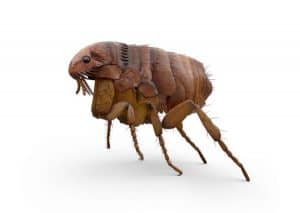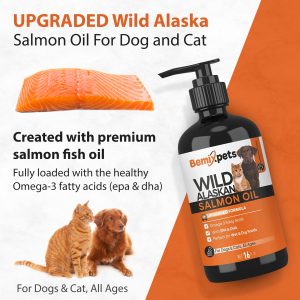So your loving pet got fleas and now what? Well, ladies and gentlemen, you have come to the right place as this article will tell you all the answers that you have been looking for. All the answers about how your doggy got fleas and what you can do to treat it and prevent it from happening the next time in future.
Contents
So how did your dog get these fleas?
The pet animals specifically dogs get fleas from some other flea-infested animal, that flea invested animal can be any stray dog or a stray cat, or it also can be some other dog or cat of your neighbour, or it can be an animal from urban wildlife, mostly racoons or opossums. The flea-infested animal might have gone through your yard, your neighbourhood or the female flea might have laid eggs somewhere close, and those eggs are rained off into your living environment. These are also called as salt shakers. And after that those eggs developed into the adults and then those fleas got onto your pet. Well, that’s how it actually happened.
Dogs usually get some ticks because they’re mostly out in that flea environment. Dogs love walking through the high grass and those woods, that’s where they crawl up on those high grass and low shrubs. The grass from which they get that terrible flea is usually 19 to 24 inches tall, and when you or your dog walks by those ticks, then they dislodge, and the insect gets onto us. These ticks or fleas whatever you want to call them, they just lie in the grass and bushes very quietly and wait for our dogs and us to come. It's kind of an ambushing strategy. These little creatures can live very well for more than a year without even getting feed.
Can fleas make my dog sick? What illnesses can my dog get from them?
When fleas are feeding, they inject saliva into the skin. That salivary stuff is allergenic, and eventually, your dog ends up with bad allergy. This skin disease of cats and especially dogs is called flea allergy dermatitis. Then at that infected area, your dog bite, scratch and lose their fluffy hair.
Since, fleas are blood-sucking insects, especially for puppies, they can become anemic, and that situation can be fatal for your pet. From ticks, your pets can get multiple types of diseases such as Lyme disease, tularemia, ehrlichiosis, rocky mountain spotted fever and some others. Most of these diseases can even kill pets.
Are fleas worse in some areas? If so then where?
Fleas and ticks can be a lot worse from an area to another. These fleas can seasonally vary in specific years. The one distinct flea species that we find on cats and dogs of North America is called the Ctenocephalides felis, or simply the cat flea. This cat flea is too much susceptible to drying. This is the reason why there fractionally number of fleas in Tampa as compared to Kansas City, and the number of fleas are in Kansas City than city Denver. In dry mountains areas such as the Western area of United States, the flea or tick isn't actually a problem because of the dryness of that region. The Gulf region, i.e. North America and the Southeast area, are filled up with fleas. In case of rainfall most areas get near all right but some area gets a lot worse. Whereas, the ticks have different behaviours and biology. Some specific areas have different densities of ticks. The end northeast and the upper Midwest, upper Pennsylvania, have quite a problem with the disease called the Lyme tick. But in the south-central part of States, ticks can be horrible.
Any natural ways to control fleas despite the chemicals usage?
Well to be honest here, there isn't really any treatment from the natural standpoint. With years of experience observed that looking for more natural approaches of treatments there is not any actual or an effective treatment. The garlic treatment you might have heard? Or the brewer’s yeast usage, the researchers have shown none of these things actually work. The ultrasonic devices also don’t work that much?
We will give you an esoteric piece of advice, just because you hear something is or “organic” or “natural”, doesn’t mean that the specific substance is actually safe for the dogs. Many poisons in the world are mostly the organic poisons. Most of the citric extracts people nowadays use can be toxic to dogs. The dogs’ livers can severely be affected by the usage of specific citric acids.
The tiny silicone particles that are spread everywhere in our carpets our homes. They scratch the flea larvae. However, you have to be careful. You don’t want your dog to inhale all that stuff, because if your dog has inhaled all those microscopic silicone particles into his lungs and after that where’s all that stuff going to go?
The solution to this problem?
There are many pesticide control firms, they apply some of their chemical stuff appropriately in the area of your home, when they perform their procedures, only then it’s safe for your dog and your cat if you have any. But all you need to make sure is that if somebody at home can do it? It must be done quite appropriately.
Can we control fleas in our yard?
Yes, you can, all you have to do is cut all that tall grass, trim all the bushes and those ugly shrubs. After that rake up the leaf litter that’s under those bushes. Just leave it bare ground. Some garden and lawn insecticides, approved by EPA, should be applied under the shrubs, in crawl spaces, under the bushes, along fence lines, to control all the fleas and ticks in the yard.
The issue is, a lot of people tend to spray their grass thinking it will eliminate all the tick and fleas. But that's not effective and is also not good for your environment. Fleas are sunlight and humidity sensitive. If you really want to spray and will not listen to us, so, mostly these fleas and ticks are under bushes, shrubs, under porches, in shaded, simply the protected habitats. So you only have to apply the chemical compounds in limited amount under those specific locations. Then let it dry on foliage for about four to five hours before you will allow your pets and even your children to go back out there.
Can you stop preventions in winter months, the time in which all the fleas and ticks, and also the mosquitoes are dead?
Just, it depends where you live. In most areas of the United States, the answer is an unequivocal "No" for several reasons. There many types of fleas that can cause the problem especially in the late fall. If you are living in the northern states or you are living in Canada, where are long protracted winters, there the flea thing could be entirely reasonable for quite some months? However, in Eastern Kansas, we strictly don’t recommend to stop all the preventions. And as a matter of fact, there are only 40-50 days in the whole year where we don’t actually see the fleas and ticks.







Leave a Reply
You must be logged in to post a comment.